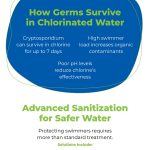In the modern world, many threats to health and the environment are invisible — and PFAS contamination is among the most concerning. These synthetic chemicals, known collectively as per- and polyfluoroalkyl substances, are often referred to as “forever chemicals” due to their extreme resistance to natural degradation. Originally developed for their ability to repel water, grease, and stains, PFAS have been used in a vast range of consumer and industrial products for decades — from nonstick cookware and waterproof clothing to firefighting foams and semiconductor manufacturing.
But what made PFAS valuable in industry has become a nightmare for ecosystems and communities. These compounds are nearly indestructible in nature, and over time, they accumulate in soil, water, and even in the human body. The result? A global contamination issue affecting everything from remote aquifers to major waterways — and the health of millions.
From End-of-Pipe to Frontline Defense
Efforts to control PFAS have long centered on remediation — removing these chemicals from drinking water, contaminated soil, or wastewater discharge. While vital, these “end-of-pipe” solutions are reactive. They focus on mitigating harm after PFAS have already dispersed. But to truly turn the tide, experts and environmental advocates increasingly agree: PFAS must be stopped at the source.
Source control means intervening at the very beginning of the contamination chain. That means better oversight and regulation of industrial operations, safer alternatives to PFAS-laden materials, and advanced treatment systems right where PFAS are produced or used. Airports, military installations, chemical plants, and landfills are all major contributors to PFAS spread — and each represents an opportunity for upstream intervention.
New Technologies, Smarter Strategies
Modern technology is helping industries rethink their approach. Thermal destruction units capable of breaking the ultra-strong carbon-fluorine bonds in PFAS are becoming more accessible. Ion exchange systems, membrane filtration, and plasma-based degradation are also being piloted and scaled to prevent PFAS from entering water streams in the first place. What’s most promising is that these methods don’t just move the problem from one place to another — they eliminate the chemicals altogether.
Importantly, this proactive approach reduces long-term remediation costs, environmental liabilities, and public health risks. Source-level solutions often prove more cost-effective and sustainable in the long run than the recurring burden of cleaning up downstream contamination.
Policy, Partnership, and Public Pressure
Success in controlling PFAS upstream depends not only on science, but also on policy and collective action. Regulatory agencies must continue to update guidance and enforce stricter discharge limits. Funding should prioritize on-site treatment infrastructure and incentivize innovation. Industries must take initiative beyond compliance — viewing environmental responsibility as integral to business strategy rather than a regulatory hurdle.
Community involvement is also crucial. Residents have the power to advocate for stronger protections, demand transparency from local industries, and support legislation that prioritizes prevention. Educated consumers can choose to support companies actively reducing or eliminating PFAS in their products or processes.
A Future Worth Protecting
The fight against PFAS is ultimately about safeguarding the essentials of life: clean water, healthy ecosystems, and safe communities. It’s about shifting from temporary fixes to permanent solutions — and recognizing that true progress starts before contamination begins. By prioritizing source control, we can prevent decades of damage and protect future generations from the unseen dangers of forever chemicals.
Every step upstream is a step toward a more resilient and responsible environmental future. Let’s stop PFAS before they spread — because the most effective way to clean up is to prevent the mess in the first place.
To learn more about the technologies and strategies driving upstream PFAS management, explore the resource shared by Heartland Water Technology.





